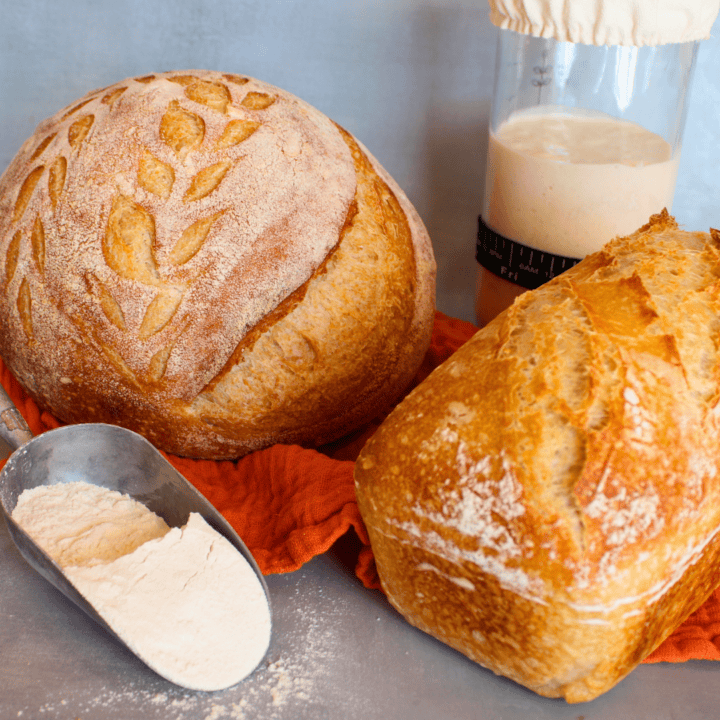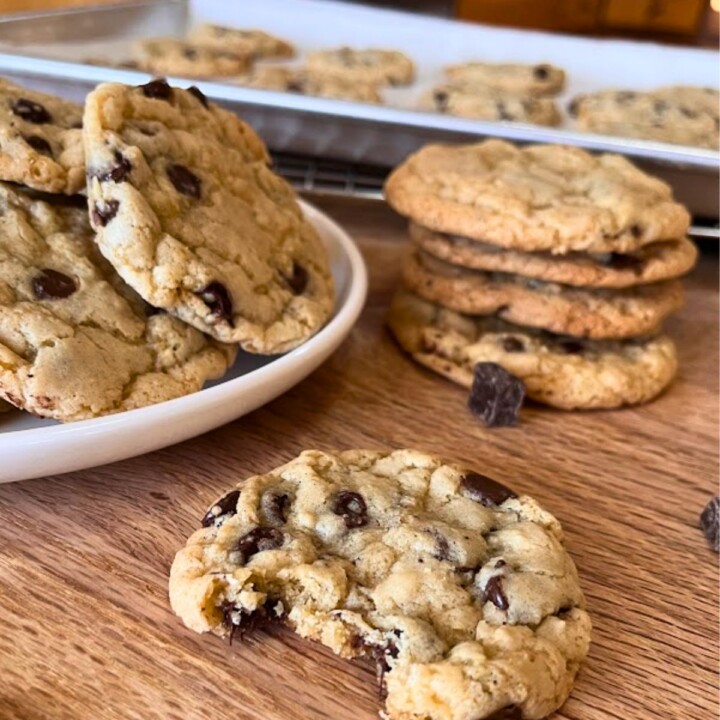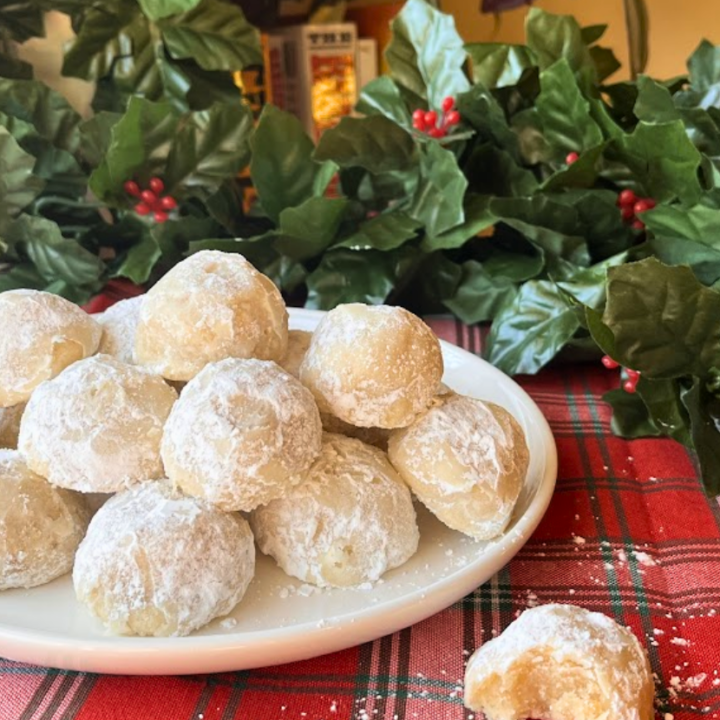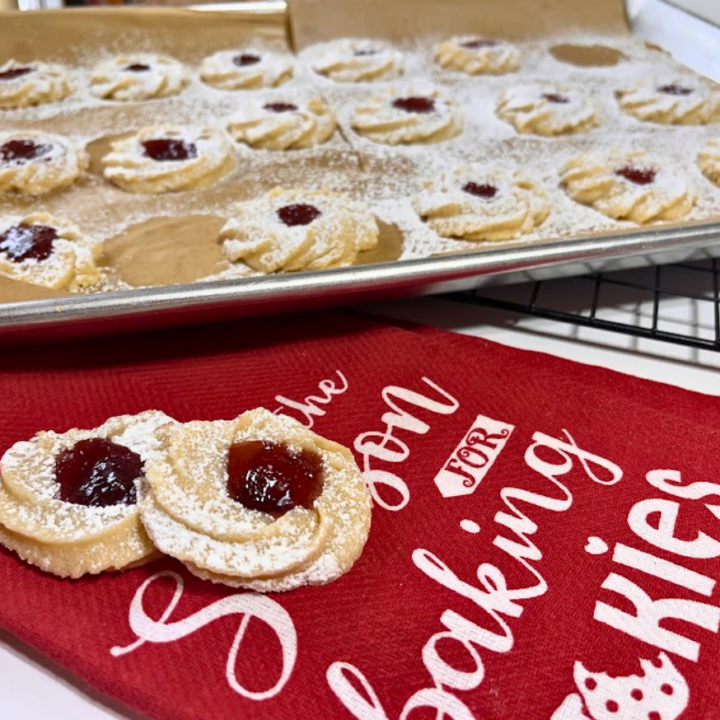Learn the best substitutes for a Bundt pan, so you can still whip up a stunning and delicious Bundt cake even if your Bundt cake pak is MIA.
Whether you’re craving a tender Bundt Cake, Lemon Loaf Cake, or a delicate strawberry cake, I’ve got you covered. Let’s do this together—because no missing pan should stand between you and dessert.
Why Use a Bundt Pan?
A Bundt pan isn’t just about those pretty fluted sides and that hollow center—it’s actually a little baking superhero. That clever design helps your cake bake evenly, keeps it moist, and gives you those beautifully browned edges we all love.
Maybe your favorite Bundt pan is hiding in storage, or you’re just in the mood to try something new. Whatever the reason, there’s always a way to make it work—and I’m here to help you find the perfect alternative!
The Best Substitute for a Bundt Pan
Finding the right substitute for a Bundt pan doesn’t have to be complicated. The key is choosing the best type of pan for your recipe. With a little creativity, you can transform your sponge cakes, layer cakes, and other types of cakes into showstoppers—no Bundt pan required!
- Springform Pan with a Center Hack
A springform pan is a great substitute for a Bundt pan. To mimic the hollow center, place a greased can or jar (without labels) in the middle. The sides of the pan and the makeshift tube will create a similar heat distribution. Wrap the can with parchment paper and spray oil for easy release. -
Tube Pans or Angel Food Cake Pans
Angel food pans or two-piece tube pans are a natural swap for Bundt pans. These pans often share a similar hollow center, which is key for even baking. Be sure to line with parchment paper or use a nonstick surface, as these pans lack the decorative fluted design. -
Loaf Pans for Pound Cakes
For denser cakes like pound cake, loaf pans work well. Divide the batter into two loaf pans, as the capacity of a Bundt pan is larger. Adjust the bake time accordingly, as the center will take longer to cook in a loaf pan. -
Round or Square Cake Pans
A regular cake pan, whether round or square, can work in a pinch. For larger recipes, you may need two 9-inch pans or one 9x13 rectangular pan. Keep in mind that without the hollow center, bake times will increase slightly. Use a test kitchen favorite method: inserting a toothpick to check for moist crumbs. -
Simple Tube Pans
An inch tube pan or chiffon cake pan, commonly used for sponge cakes and delicate desserts, is a great option for recipes like sour cream coffee cakes. Just be mindful of the pan’s nonstick coating to ensure your cake releases beautifully. -
Muffin Pans for Individual Servings
If you have extra batter or prefer smaller portions, use a muffin pan! Spray oil or nonstick baking sprays will prevent sticking and help create a nonstick surface for easy removal.
Bundt Pan Substitutes: Tips for Flawless Cakes
Adjust Baking Time
Different pans mean different bake times because the surface area and depth vary between types of pans.
A shallow rectangular pan, square pan, or round cake pan will often bake faster than a deep Bundt cake mold because the heat reaches the center of the batter more quickly.
Start checking for doneness 10-15 minutes earlier than the recipe suggests to avoid overbaking. Use a toothpick or skewer inserted into the center of the cake to check for moist crumbs—this ensures the cake is perfectly baked without being dry.
Grease Generously
Making sure your cake doesn’t stick is critical when substituting for a Bundt pan.
Use vegetable oil, spray oil, or a pastry brush with melted butter to thoroughly coat the sides of the pan, paying close attention to corners and edges. A folded paper towel can help spread the oil evenly. Even if you're using darker pans or non-stick pans, greasing is still essential to prevent sticking and maintain the integrity of the delicate cake. For added insurance, sprinkle a thin layer of flour over the greased surface.
Monitor Volume
The capacity of a Bundt pan is typically 10-12 cups of batter. When substituting with smaller or different pans, make sure you leave enough room for the batter to rise—usually about two-thirds full is ideal.
If you have extra batter, it's a good idea to bake it in a muffin pan, jelly roll pan, or smaller loaf pans. Leftover batter can result in fun mini-cakes or cupcakes! Remember to adjust the cooking time for these smaller portions.
Line with Parchment
When using pans with a removable bottom, such as springform pans, angel food pans, or simple tube pans, parchment paper becomes your best friend. Cut a round piece for the base and strips for the sides of the pan. This helps get a clean release without damaging the top of the cake, especially for delicate desserts like chiffon cakes or sponge cakes.
Use Pie Weights for Stability
If you're creating a makeshift Bundt pan by placing a greased can or jar in the center of a springform pan or round pans, stability is key. Fill the can with pie weights, dried beans, or even rice to prevent it from moving during baking. This setup mimics the hollow center of a Bundt pan and helps your cake bake evenly without collapsing.
DIY Pan Release: The Secret to a Perfect Cake Release
If you’ve ever had a cake stick to the pan, you know the heartbreak of losing that gorgeous shape or intricate design. Enter my DIY pan release, also known as “cake goop.” This easy-to-make mixture helps your Bundt cakes, coffee cakes, and delicate desserts release cleanly every single time.
Perfect for Bundt Cakes: Unlike spray oils or nonstick baking sprays, this homemade pan release doesn’t leave any residue or uneven coating. It’s also versatile—you can use it for loaf pans, round pans, or even jelly roll pans. Keep a jar on hand in your kitchen for effortless baking!
Copycat Nothing Bundt Cakes Recipe
If you’ve ever tasted the iconic Nothing Bundt Cakes, you know their perfectly moist texture and rich flavors are irresistible. Now, you can recreate their signature cakes at home with my easy Nothing Bundt Cakes copycat recipe!
What Makes This Recipe Special:
This recipe uses a cream cheese-based batter for that unbeatable moisture and soft crumb. The resulting cake is rich, decadent, and topped with more cream cheese frosting that mimics the signature Nothing Bundt Cakes swirl. Plus, it’s versatile—you can use this batter to make mini Bundts, a coffee cake, or even cupcakes if you’re using leftover batter.
Cool Before You Flip: The Key to a Perfect Cake Release
If you have ever tried frosting a hot cake, then you know what a disaster that can be. Cooling your cake properly is the best way to avoid sticking. Allow the cake to cool for 10-15 minutes in the pan before flipping it onto a cooling rack. For Bundt pan recipes, gently tap the top of the cake (the bottom of the pan) before lifting it off.
Need a Bundt Pan? Here Are the Best Options
If you find yourself frequently baking Bundt cakes, investing in a quality Bundt pan is worth it! A well-made pan ensures even baking, easy release, and those beautiful fluted edges that make Bundt cakes so special. Here are some great options to consider:
- Best Classic Bundt Pan: A sturdy, nonstick Bundt pan that works for most recipes.
- Nonstick Bundt Pan for Easy Release: No more stuck cakes! This pan has a durable nonstick coating.
- Silicone Bundt Pan for Easy Cleaning: A flexible option that makes removing cakes effortless.
- Mini Bundt Pans for Individual Cakes: Perfect for personal-sized desserts or giftable treats.
Now You Know the Best Substitute for a Bundt Pan
No Bundt pan? No worries! —these clever swaps will save the day and still deliver show-stopping cakes every time!








Leave a Reply